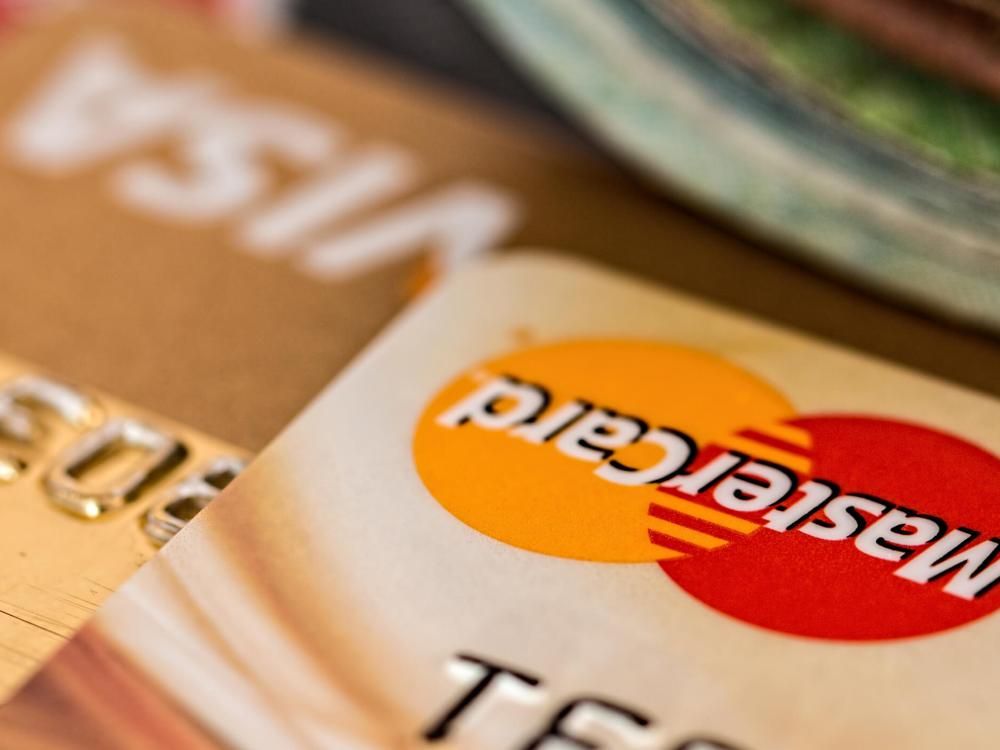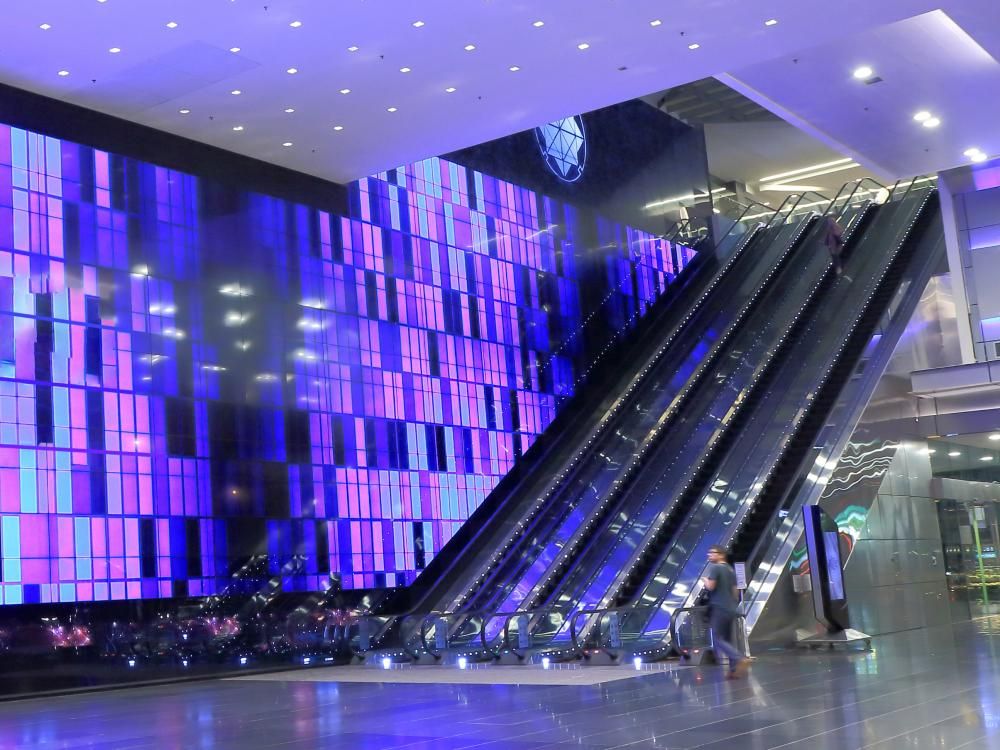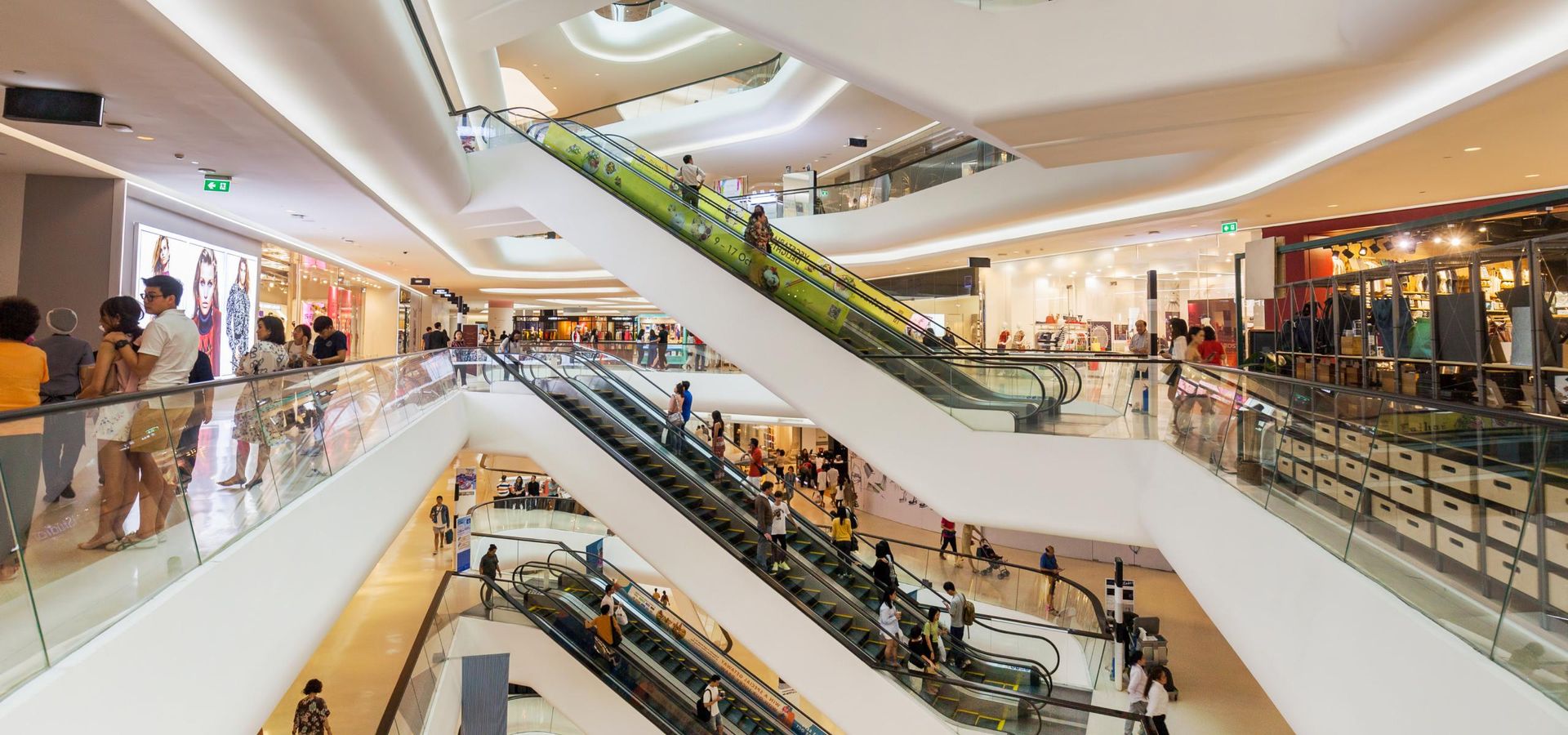
Mobile PoS: types, top solutions, integrations & benefits
January 31, 2024
- Home
- Industries
- Retail
- PoS systems
- Mobile PoS
Our team of PoS software development experts helps businesses deliver positive buying experiences and boost performance with an aptly chosen, implemented, and fine-tuned mobile PoS system.
Mobile PoS market stats
expected transaction value in the mobile PoS payments market by 2027
Statista
estimated CAGR of the global mobile PoS terminals market by 2030
Grand View Research
Scheme title: Mobile PoS terminals market size, by application, 2018–2028
Data source: researchandmarkets.com — Global mobile POS terminals market size
Accept card payments on the go with a mobile PoS
Types of mobile PoS systems
There are several types of mobile PoS systems that run on different devices and cater to specific industries and business needs.
Mobile PoS software turns iPad and Android tablets into portable PoS systems for accepting payments and performing administrative tasks in-store or on the go. Typically, tablet-based PoS systems work using in-store Wi-Fi. You can connect your tablet to hardware peripherals to unify various aspects of your business and manage them more efficiently. Moreover, tablets’ intuitive touchscreen interface simplifies sales workflows and accelerates staff training.
Best for
- Small businesses
- Mid-sized retailers
- Full-service restaurants with multiple servers
Phone-based systems
Smartphone-based PoS systems work together with a detachable card reader to quickly accept payments from customers via Wi-Fi or mobile data. This type of mobile PoS facilitates sales when merchants don’t have space for a stationary PoS or don’t need additional hardware apart from the PoS for their daily operations.
Best for
- Mobile, on-the-go businesses
Terminal-based systems
Terminal-based systems don’t require a smartphone or tablet because they are an all-in-one mobile POS system consisting of a terminal, card reader, and built-in PoS software. They can be a handheld version of the standard, stationary terminal to be used by salespeople and restaurant servers on the shop floor or at the tables.
Best for
- Small or mobile businesses
- Restaurants that offer tableside ordering
PoS kiosks
Self-service PoS kiosks usually consist of a tablet with a card reader and allow customers to browse menus, place orders at restaurants, and buy products in retail stores without personnel’s assistance. This is a convenient self-service option that helps reduce operational workload and increase customer engagement.
Best for
- Quick-service and self-service restaurants
- Street vendors
- Outdoor entertainment businesses
Our mPoS services
We create flexible and secure mobile PoS systems for businesses of any size or domain to help them streamline checkout, improve in-store experiences, and foster customer engagement.
Development
Itransition delivers bespoke standalone mobile PoS solutions and supplementary mobile apps for existing PoS systems to run on Android and iOS devices. We equip our mPoS systems with robust, versatile functionality tailored to your business specifics and design user-friendly interfaces to ensure fast user adoption and frictionless use.
We integrate mPoS systems with the most popular payment gateways to facilitate cashless transactions and meet customers’ expectations of flexible payment options. We also sync mPoS systems with various business tools to help retailers and restaurants streamline key processes and ensure accurate reporting.
Maintenance
Our experts help merchants keep their mobile PoS systems fully operational, secure, and cost-effective. We run on-demand and ongoing software audits to detect potential issues, take preventive measures, and fine-tune the mPoS for optimal performance.
How to choose an mPoS solution
Business owners should consider multiple aspects of mobile PoS systems to choose an optimal solution that will match their business requirements and support their growth plans.
Features
- Multiple payment processing options
- Inventory management
- CRM features
- Loyalty program features
- Menu or table management for food businesses
- Reporting
- Hardware and software integration potential
- Offline mode
Security
- PCI compliance
- End-to-end encryption
- Authorization
- User roles
- Two-factor authentication
- Regular updates
- Provider’s help with potential disputes
Scalability
Questions to consider:
- How many locations do you have now and plan to have in the future?
- Do you need only a mobile phone or several tablet-based stations?
- How many employees are going to use the mPoS?
Cost
- Upfront implementation costs
- Maintenance costs
- One-time licensing fee
- Regular monthly subscription fees
- Discounted annual subscription fees
- Flexible and multi-tier plans
- Transaction processing rates
Compatibility
- iPhone, iPad, and Mac
- Android phones and tablets
- Windows tablets
- Specific hardware peripherals
Top mobile PoS solutions to consider
Many popular PoS providers offer mobile versions of their software to complement all-in-one countertop PoS systems or enable independent on-the-go sales completion with merchant’s own tablets and smartphones.
One of the most popular PoS platforms, Square offers a free mobile app with a suite of features accommodating the essential needs of retailers, quick-serve restaurants, and mobile service businesses.
Features
- Sales tracking and reporting
- Inventory management and CRM
- Offline mode for accepting payments without a Wi-Fi connection
- Customizable interface
- Readers for magstripe, chip cards, and contactless payments
- Diverse hardware lineup for mobile and stationary PoS systems
- Paid add-ons for loyalty, team management, payroll, and marketing
- Square App Marketplace
Key differentiators
- A user-friendly interface and robust feature set
- A monthly subscription requiring no long-term commitments
Limitations
- Expensive for high transaction volumes
- Doesn’t offer specialized features
- A list of prohibited goods and services
OS compatibility
- iOS
- Android
Device type
- Smartphone
- Tablet
Pricing
- No monthly fee for basic mobile PoS features
- Additional apps can range from $5 to $45 a month
- Transaction processing rates: in-person: 2.6% + 10 cents; online: 2.9% + 30 cents; manual key: 3.5% + 15 cents
- Custom pricing for businesses that process $250,000+ in credit card sales
- A free reader for magstripe
Target companies
- New and small businesses
- Mid-sized companies
- Established enterprises with multiple stores
Vend by Lightspeed is a cloud-based PoS system designed to help retailers easily manage their sales and stock, improve customer experience, and scale their businesses.
Features
- Integration with global merchant providers
- Receipt customization
- Barcode scanning using a smartphone
- Ecommerce integration
- Multichannel inventory management
- Customer database
- Custom loyalty programs
- Customizable product, sales, inventory, employee, and end-of-day reports
- Integration with accounting, email marketing, staffing, and scheduling apps
- Offline work mode
- 24/7 customer support
- A global network of Vend Expert partners
Key differentiators
- An easy-to-use PoS with strong customer loyalty features
Limitations
- Higher transaction processing rates if you don’t use Lightspeed Payments
OS compatibility
- iOS
Device type
- iPad
- Mac
Pricing
- Pricing plans start at $69 a month and vary depending on the country and number of locations and registers
- Transaction processing rate for card-present transactions (US): 2.6% +10 cents
- 14-day free trial
Target companies
- Small to mid-sized businesses
Shopify PoS unifies online and in-person shopping to streamline sales across channels, making it easy for any retailer to expand to retail locations, international markets, and online channels.
Video title: Shopify PoS app home screen
Video source: shopify.dev — Shopify Point of Sale
Features
- Built-in payment processing
- Customizable checkout workflow
- Unified order and inventory management with Shopify online stores
- Centralized reporting and analytics
- BOPIS and ship-to-customer options
- Unlimited staff accounts
- Staff role assignment and permission customization
- Unlimited PoS terminals per location
- Hardware rental program
- Each Shopify plan includes an ecommerce website
Key differentiators
- A powerful solution for omnichannel retail
Limitations
- Not a standalone PoS for full-time retail businesses
- Higher transaction fees if you don’t use Shopify Payments
OS compatibility
- iOS
- Android
Device type
- Smartphone
- Tablet
Pricing
- PoS Starter plan at $5 a month
- PoS Retail plan at $89 a month
- Transaction processing rates depend on the plan and start at 2.4% for in-person payment and 2.4% + 30 cents for online payments
- A basic card reader starts at $49
- 3-day free trial with 3 months for $1 a month
Target companies
- Brick-and-mortar and online retailers
- Ecommerce businesses
TouchBistro, an all-in-one PoS solution for food service businesses with restaurant-specific features, offers a mobile PoS app that allows users to take orders and accept payments tableside or at various locations.
Features
- Integration with external payment processors
- Floor plan customization and table management
- Menu management
- On- and off-premise and order management
- Bill splitting
- Staff and scheduling management
- Inventory management
- Tableside ordering
- 50+ types of reports
- Add-ons for reservations, online ordering, gift cards, loyalty programs, kitchen display system, and customer-facing display
- Works during internet outages
- Customer support available 24/7 at no additional cost
Key differentiators
- A niche system for the restaurant industry with back-of-the-house, front-of-the-house, and guest engagement solutions
Limitations
- Automatic contract renewal unless a 30-day prior notice of cancellation is given
OS compatibility
- iOS
Device type
- Tablet
Pricing
- Monthly fees start at $69
- Additional solutions range from $19 to $330
- Payment processing rates are quote-based
Target companies
- Full- and quick-service restaurants
- Cafes
- Food trucks
Most off-the-shelf mPoS systems provide core payment processing features for all types of businesses. However, out-of-box functionality can be insufficient to meet the specific needs of some companies. Moreover, ready-to-use mPoS can have inherent restrictions on payment processing services or the hardware and software connected to the system. The best way to overcome these limitations is to develop a custom mobile PoS that will have valuable, best-suited features for your business niche, fit naturally into your workflows, and provide all necessary integrations.
Valuable mPoS integrations
Merchants can adapt their mPoS to their unique workflows and expand the solutions’ functionality by adding necessary integrations.
Mobile payments
- Mobile wallets like Apple Pay and Google Pay that use near-field communication (NFC) technology for contactless payments
- Samsung Pay that supports NFC and magnetic secure transmission (MST) payments
- QR codes for accepting payments and applying discounts
Cloud services
- Access to mPoS data from any place or device
- Real-time inventory synchronization
- mPoS data backup
- Scalability enablement
- No physical storage infrastructure
- Facilitated workflow automation
- Sending personalized promotions to customers
- Automatic initiation of contactless payment processing
- Valuable customer insights based on the data obtained from beacon interactions
- Advanced PoS data analysis
- Business effectiveness evaluation
- Sales trend identification and forecasting
- Effective, informed decision-making
Loyalty programs
- Cashier-assisted user enrollment via the mPoS or self-enrollment using in-store kiosks or QR codes
- Easy point earning, tracking, and redemption
- Instant customer gratification with personalized discounts, coupons, and rewards
- Customer data collection
Hardware to set up a mobile PoS
mPoS systems can be connected to multiple hardware peripherals to let users handle all business tasks from mobile devices and deliver better in-store experiences.
Mobile devices
Card readers
Barcode scanners
Cash registers
Cash drawers
Printers
Mobile PoS for various businesses
Retail stores
Retailers of any size and sector can adopt a mobile point-of-sale system to ring up customers instantly on the shop floor and capitalize on impulse buying.
Pop-up shops, trade show sellers & street vendors
By adopting an mPoS, merchants can tap into non-traditional sales opportunities at festivals, trade shows, or local sidewalk sales, bringing their products directly to consumers.
Transportation services
With mobile PoS systems, businesses like taxi drivers can easily accept card and mobile payments from customers who don’t carry cash or local currency with them.
Restaurants
Both quick- and full-service restaurants can equip their servers with mobile PoS systems to accept orders and payments, split checks, and recommend menu items without leaving guests at the table.
Food trucks & pop-up restaurants
Since mPoS systems are portable and don’t take up too much space, they enable food services to take business to different venues or events, allowing them to process transactions and track sales and inventory wherever they are.
Mobile service-based businesses & freelancers
Many businesses like plumbing, lawn or pet care, and photographers that visit clients and traditionally accept only cash can adopt mPoS to offer their audience several convenient payment methods.
Mobile PoS for various businesses
The difference between mPoS & PoS
Although both mobile and traditional PoS systems can accept payments from customers and help manage retail operations, they have different purposes stemming from their hardware and operational distinctions.
Mobile PoS
PoS
Portability
Portability
Portable systems with handheld devices.
Stationary countertop systems with a fixed location.
Capabilities
Capabilities
Both mPoS and PoS systems provide basic features, including payment processing, inventory tracking, customer data collection, and reporting. However, they focus on different aspects of operations.
Mobile PoS systems emphasize mobile, flexible payments, order placement, and customer interactions.
Traditional PoS prioritizes back-office operations, including advanced inventory management, sales tracking, and multi-location support.
Hardware
Hardware
Mobile devices with optional detachable peripherals.
Bulky and relatively heavy devices; fixed terminals and peripherals. They are often designed for dedicated counters and stations, providing a consistent location for customers to interact with the staff.
Software
Software
Mobile PoS solutions are usually cloud-based, which means users can use the system from anywhere via the internet. The mobile PoS provider takes care of hosting, data storage, and software maintenance and updates. The installation is typically quick and user-friendly, so even merchants with no technical knowledge can set up a PoS with pre-built modules and add-ons.
PoS systems can run on different types of software.
- Cloud-based
Like with mobile PoS, users can use their cloud-based PoS over the internet, leaving the maintenance and update burden to PoS providers. - On-premise
Installed and hosted at a company’s physical location, these PoS systems are reliable and secure and give businesses full control of the solution. However, the service package doesn’t include software updates, maintenance, and customer support.
Data accessibility
Data accessibility
From any place with internet access.
Users have to physically access a PoS to manage data. Some PoS systems can operate in an offline mode.
Training
Training
Mobile PoS systems are usually very intuitive, which cuts down the time and costs of employee training.
Traditional PoS have more complex interfaces, resulting in longer training periods.
Pricing
Pricing
Lower initial costs due to easy setup and cheaper hardware. However, merchants should pay monthly or annual software fees, transaction processing fees, and the cost of add-on services.
Upfront costs can be higher due to more expensive hardware, installation, and configuration, but the final cost depends on the type of PoS software.
Best for
Best for
Startups and small businesses Traveling businesses Large enterprises can add mobile PoS systems to ring up more customers during rush hours, prevent lines, and improve customer service.
Companies of any size operating at a stationary location will benefit from using a PoS system.
Benefits of mobile PoS solutions
Portable and versatile tools, mobile point-of-sale systems bring multiple practical benefits to businesses.
Payment option diversity
Mobile PoS systems support multiple cashless and contactless payment methods like card payments and digital wallets. By providing varied payment options both in-store and on the go, merchants can better meet customers’ expectations of convenient buying experiences.
Faster checkout
In establishments with stationary PoS systems, a mobile PoS can be a complementary tool for registering sales on the shop floor during rush hours or heavy traffic times, speeding up checkout, reducing waiting time, and busting lines.
Better customer engagement
With an mPoS system on hand, staff can quickly access customer information to offer personalized promotions and recommendations, scan loyalty cards to provide discounts and rewards, immediately address customer inquiries, and follow up with customers via digital receipts.
Improved efficiency
By automating critical workflows, an mPoS helps reduce errors, frees staff from manual tasks, and lets them focus on meaningful customer interactions. Moreover, using mPoS reports, business owners can gain visibility into their company’s performance and build more effective operation strategies.
Cost-effectiveness
Mobile PoS systems are usually easy to set up and use, which shortens staff training time and enables businesses to begin processing transactions as soon as possible. In addition, mPoS solutions can work with ordinary smartphones without additional PoS hardware, reducing overheads.
Improved restaurant service
Restaurants can enhance customer service by accepting payments and taking orders at the tableside. Orders entered into the mPoS are immediately sent to the kitchen, which minimizes order errors, accelerates order processing, and increases customer satisfaction.

Accelerate sales with mobile PoS
Today, retailers face the unwillingness of customers to spend much time at the checkout and their rising preference to use contactless payments. Mobile PoS technology presents an opportunity for businesses to ring up customers directly from the product display area while reducing wait times, engaging shoppers with rewards schemes, and encouraging repeat purchases. Itransition is ready to help you adopt a robust mobile PoS solution to gain a competitive edge in the saturated retail environment and bring more value to your customers.

Improve your customer experience with a mobile PoS solution
FAQs about mobile PoS systems
How much does a mobile PoS system cost?
The pricing of out-of-the-box mobile PoS software ranges from $0 to $200 per month. However, the final cost also includes payment processing rates, fees for additional applications, and hardware peripheral payments if a company needs them. The cost of custom mPoS systems depends on the project’s size and complexity, business requirements, number of integrations, and development team. On average, a bespoke mPoS starts at $50,000.
How do mobile PoS systems work?
A simple mobile PoS setup includes a mobile device, a software application, a card reader, and a stable wireless internet connection (Wi-Fi or mobile data). Once you install the app on your smartphone or tablet and connect the card reader, you’re ready to process payments.
What are the limitations of the mobile PoS?
Since mobile PoS devices are not connected to a power source when in use, the battery can go out sooner than a shift ends. Therefore, employees should monitor the battery level throughout the working day. Merchants should also look after their devices to prevent their loss or damage during daily use. Mobile PoS devices wear out faster than stationary devices and require more frequent maintenance, repair, and replacement.

Case study
Payment processing system redevelopment
Itransition's team revamped a payment processing system for an established payment transaction service provider.

Case study
Self-service kiosk app for a restaurant chain
Learn about the self-service kiosk app we developed for a 24/7 restaurant chain that contains payment, advertising, maintenance and advertising modules.

Insights
A roadmap to sales automation software implementation
Explore how to evaluate a sales team automation potential and identify the best use cases for a sales automation software.

Insights
Machine learning in retail: 10 ways to upgrade your store
Explore the top use cases of machine learning in retail and find out what benefits this technology can bring to your business.

News
Itransition recognized in Forrester’s Modern Application Development Services report
Itransition is featured in MAD consulting boutiques and Modern product development service providers categories by Forrester.

Insights
IoT in retail: 10 use cases, benefits, and challenges
Explore the concept of IoT in retail, view the most prominent technologies and their applications, and uncover the top advantages and challenges.

Insights
Business intelligence in the retail sector: main use cases, benefits & platforms
Discover how your retail company can benefit from business intelligence software by exploring its key features, common integrations, and best platforms.

Service
Retail software development services, solutions & tech stack
Learn how our retail software development company helps retailers and ecommerce businesses deliver great customer experiences through reliable software.